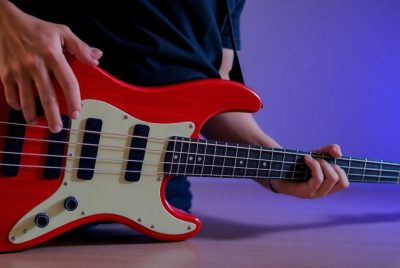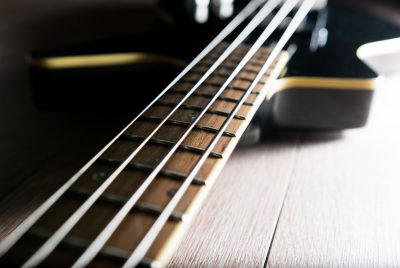Bass Guitar Exercises: Elevate Your Groove
Getting Started with Bass Guitar Exercises
Before we get those fingers flying across the fretboard, let’s chat about the basics and rock some bass guitar exercises. A solid warm-up is your best friend – it primes your muscles and gets you in the zone. And gear? It matters more than you think. A comfy strap saves your back during those marathon sessions, a reliable metronome keeps you in check, and a good amp makes all the difference in hearing the nuances of your playing.
Core Bass Guitar Exercises
Finger Independence Exercises
- The Spider Exercise: This one’s a classic for a reason. It gets all four fingers moving in sync across strings and frets, challenging your dexterity.
- One Finger Per Fret Practice: Stick to the mantra of one finger per fret to build strength and stretch in your hand, crucial for those wide-reaching bass lines.
Advanced Techniques
- Slap and Pop Techniques: The essence of funk. Slapping the strings with your thumb and popping them with your fingers can bring a percussive, vibrant texture to your playing.
- Tapping Techniques: Often seen as a guitarist’s domain, but who says bassists can’t have fun with it? Tapping opens up a whole new world of melodies and harmonies on your bass.
Bass Guitar Scale Exercises
- Major Scale Workout: Practice the Major scale in different keys across the fretboard. This builds familiarity with the scale patterns and improves your finger strength and dexterity.
- Minor Pentatonic Scale Runs: The Minor Pentatonic scale is crucial for bass players in genres like rock and blues. Practice ascending and descending runs to develop your improvisational skills.
- Chromatic Finger Exercises: Starting on any note, play each fret on a string in succession before moving to the next string. This exercise improves finger independence and fretboard navigation.
- Blues Scale Boxes: The Blues scale adds a flat fifth to the Minor Pentatonic, creating a distinct sound. Practice this scale in boxes around the fretboard to boost your blues playing.
- Modes of the Major Scale: Learning and practicing the seven modes (Ionian, Dorian, Phrygian, Lydian, Mixolydian, Aeolian, and Locrian) helps with understanding different musical feels and improves versatility.

1. Major Scale Exercise
Objective: Improve finger strength and familiarize yourself with the major scale across the neck.
Exercise:
- Start on the 3rd fret of the E string (G note).
- Play the G major scale: G, A, B, C, D, E, F#, G.
- Use the following fingering: index, middle, pinky, index, middle, pinky, index, middle.
- Ascend and descend the scale.
- Move up one fret and repeat the exercise in G# major, then A major, and so on.
2. Chromatic Exercise
Objective: Improve finger independence and coordination.
Exercise:
- Start on the 1st fret of the E string.
- Play the notes in this sequence: 1st fret (index), 2nd fret (middle), 3rd fret (ring), 4th fret (pinky).
- Move to the A string and repeat the sequence.
- Continue this pattern on the D and G strings.
- Once you reach the G string, move up one fret and reverse the pattern, descending back down the strings.
3. String Skipping Exercise
Objective: Enhance right-hand accuracy and coordination.
Exercise:
- Start on the E string, 5th fret (A note).
- Play the 5th fret (A) on the E string, then the 7th fret (E) on the A string.
- Move to the 5th fret (D) on the D string, then the 7th fret (A) on the G string.
- Continue this pattern, skipping a string each time: E to A, A to D, D to G.
- Ascend and descend the pattern.
4. Finger Dexterity Exercise
Objective: Develop finger independence and improve speed.
Exercise:
- Start on the 5th fret of the E string.
- Play the notes in this sequence: 5th fret (index), 6th fret (middle), 7th fret (ring), 8th fret (pinky).
- Repeat the same sequence on the A string, then the D string, and finally the G string.
- Move up one fret and repeat the sequence starting from the 6th fret.
5. Arpeggio Exercise
Objective: Improve your understanding of chord tones and finger positioning.
Exercise:
- Start on the 3rd fret of the E string (G note).
- Play the G major arpeggio: G (3rd fret, E string), B (2nd fret, A string), D (5th fret, A string), G (5th fret, D string).
- Use the following fingering: index, middle, pinky, index.
- Ascend and descend the arpeggio.
- Move up the neck to play the G# major arpeggio, then A major, and so on.
Tips for Practicing:
- Use a Metronome: Practice each exercise with a metronome to improve timing and rhythm.
- Start Slow: Begin at a slow tempo and gradually increase the speed as you become more comfortable.
- Focus on Clean Playing: Ensure each note rings clearly without any unwanted noise or muting.
- Alternate Picking: Use alternating picking (down-up strokes) for right-hand exercises to develop consistency.
- Stay Relaxed: Keep your hands and fingers relaxed to avoid strain and improve endurance.
Creating a Practice Routine
It’s not just about what you practice but how you practice. Mixing technique with musicality and tracking your progress can keep you motivated and ensure you’re always improving. The secret sauce? Consistency and balance. Mix technical drills with musical pieces you enjoy. Set small, achievable goals, and track your progress. Seeing how far you’ve come is incredibly rewarding and fuels your motivation.
Common Challenges and How to Overcome Them
Every bassist faces hurdles. Maybe you’re not progressing as fast as you hoped, or a particular technique is giving you trouble. The key is persistence and patience. Break down challenges into smaller, manageable pieces. And remember, it’s okay to take a break and come back with fresh eyes (and fingers). We all hit roadblocks. Feeling frustrated or stuck at a plateau can be disheartening, but with the right approach and mindset, you can overcome these challenges and continue to grow as a musician.
Additional Resources for Bass Guitar Exercises
Never underestimate the power of community and learning resources. Dive into online forums, watch tutorial videos, and if possible, find a mentor. Learning from others’ experiences accelerates your growth and enriches your musical journey. There’s a wealth of information out there for bass players. From books to online courses and communities, never underestimate the power of learning from others and sharing your own experiences.
Conclusion
Embarking on the bass guitar journey is one of the most rewarding musical adventures you’ll ever undertake. It’s about more than just exercises and techniques; it’s about expressing yourself through the unique voice of the bass. Stay curious, be patient, and most importantly, enjoy every thump, pluck, and groove.
FAQs
1. What Are Some Good Songs to Practice for Beginners? – Start with songs that have simple but groovy bass lines. Think “Another One Bites the Dust” by Queen or “With or Without You” by U2. They’ll help you master rhythm and timing in a musical context.
2. Is It Necessary to Learn Music Theory? – While not strictly necessary, a basic understanding of music theory can vastly improve your playing. It helps you communicate with other musicians, improvise, and understand the structure of the music you’re playing.
3. How Important Is Fingerstyle vs. Pick Playing? – Both have their place in a bassist’s toolbox. Fingerstyle offers a warmer, more nuanced tone, while playing with a pick can provide a sharper attack and volume. Experiment with both to discover what suits your style and the music you play.
4. Can Practicing Too Much Be Harmful? – Yes, over-practicing can lead to strain and injury. Listen to your body. If you start to feel pain or discomfort, take a break. It’s about smart practice, not just more practice.
5. How Can I Stay Motivated to Practice? – Set realistic goals, celebrate your achievements, and remember why you started playing bass in the first place. Music is a journey, not a destination. Enjoy the ride!




